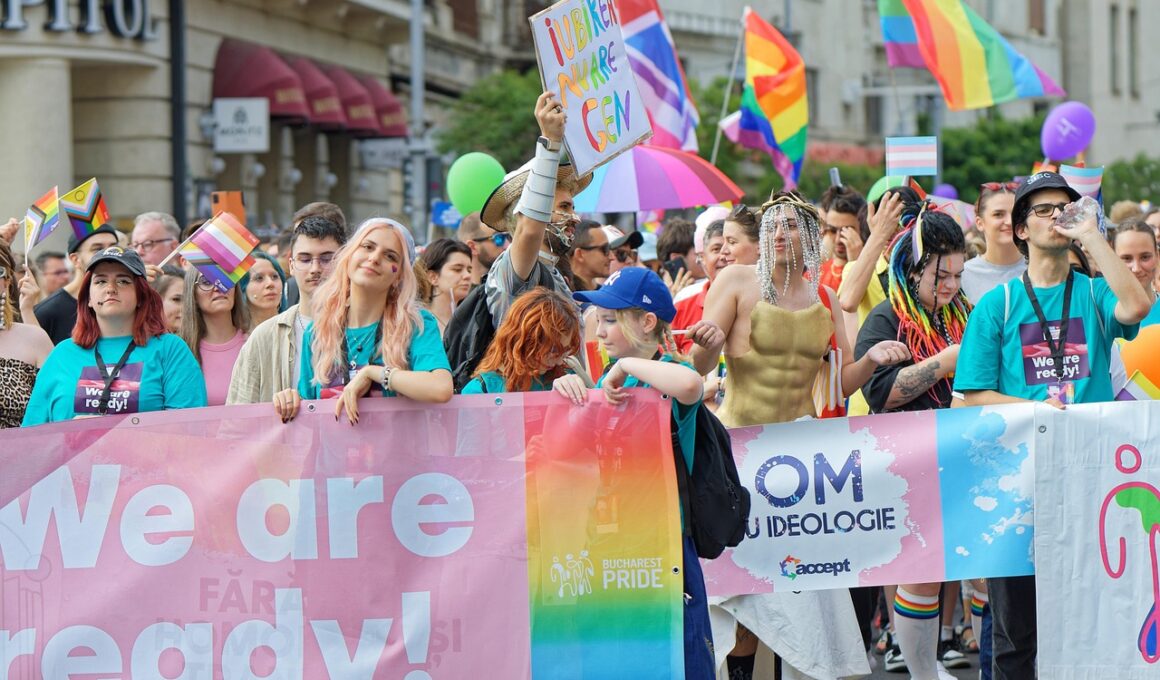Measuring the Impact of Employee Advocacy on Event Social Media Metrics
Event success often relies on smooth execution, where social media plays a crucial role in promotion. Companies can enhance their visibility by leveraging employee advocacy through various social platforms. Employees are powerful ambassadors, and their shared experiences during events can significantly impact engagement metrics. A compelling approach is to track how much reach, likes, shares, and comments employee-generated content achieves, compared to standard marketing posts. By encouraging employees to post using relevant hashtags and specially created content, organizations can amplify event messaging and visibility. Creating focused training sessions can prepare employees to maximize their social media effectiveness. This enables each participant to represent the event successfully, resulting in augmented organic reach. Advanced analytical tools can help organizations measure this impact accurately, thus providing insightful data on post-event perceptions as well. Data-driven decisions stemming from this analysis can personalize future strategies, enhancing employee and attendee engagement. Highlighting employee contributions not only increases morale but also encourages a sense of ownership over the event’s success, creating a virtuous cycle of involvement and outreach. Monitoring these statistics regularly can steer the organization towards achieving its social media goals.
Understanding key performance indicators (KPIs) for social media is vital for organizations aiming to evaluate their event’s success. KPIs like impressions, engagement rates, and conversions can provide insight into how employee advocacy influences overall metrics. Organizations should establish specific objectives for each event to assess performance levels accurately. Having defined goals helps in benchmarking success and drawing comparisons to previous events. Metrics must be analyzed through comprehensive tools and reports that businesses can utilize to derive valuable insights about audience sentiments and engagement trends. For instance, social listening tools can track the tone of conversations surrounding the event and determine areas for improvement. Dissecting audience feedback encompasses analyzing likes, retweets, and comments across different platforms to see how employees’ voices resonate with the general public. Additionally, the creation of customized hashtags can foster community engagement, enabling easier tracking of relevant conversations. Understanding these nuances presents an opportunity for continuous improvement in event promotion and planning. Furthermore, aligning social media strategies with event themes creates relevant content that boosts employee advocacy, allowing for a more coherent branding message throughout the event.
Analyzing Engagement and Reach
Engagement and reach are fundamental metrics when measuring the impact of employee advocacy on social media during events. Engagement includes likes, comments, shares, mentions, and overall interactions. Analyzing what type of content garners the most engagement empowers companies to tailor their posts effectively. It becomes crucial to encourage employees to share authentic experiences, as genuine content often results in higher engagement. Promotional materials should highlight employees’ stories or testimonials, making their contributions relatable and valuable. Moreover, reach quantifies the total audience exposed to employee posts through shares and interactions. Evaluating reach helps organizations determine the potential visibility they gained from their employees’ social shares. Creating a feedback loop where employees can review event analytics can motivate and inspire them to share more content. These insights can not only drive future employee participation but also assist in understanding audience demographics and preferences. By understanding the relationship between employee advocacy and engagement metrics, businesses can develop targeted strategies that optimize future social media campaigns, enhancing overall satisfaction and connection between the organization and its community.
Another vital aspect of leveraging employee advocacy through social media involves analyzing the sentiment surrounding an event. Sentiment analysis tools can help organizations decode the emotions expressed in public discussions. By capturing the emotional responses from audiences towards employee-generated content, organizations can gain understanding of attendee and prospective attendee feelings. This information is crucial, as it highlights both strengths and weaknesses in their events. Positive sentiments may promote brand loyalty and enhance community, while negative ones can signal areas needing improvement. Actively monitoring this sentiment throughout the event journey allows businesses to adapt quickly, addressing issues in real-time, which can greatly influence attendee experience. Furthermore, recognizing and celebrating employees whose content drives positive sentiment can motivate others to participate. Encouraging open dialogue and providing a foundation for feedback creates an environment where employees feel valued and empowered to promote events. By fostering this culture, organizations also create a sustainable model for future advocacy initiatives. Ultimately, the insights gathered from sentiment analysis can bolster marketing efforts and direct focus toward continuous growth, bringing the organization closer to its social media objectives.
Creating Effective Strategies
Developing effective strategies for employee advocacy on social media starts with fostering a culture of sharing. Organizations must prioritize creating a supportive environment where employees feel encouraged to express their opinions and experiences. Training sessions can help familiarize employees with social media best practices, enabling them to deliver powerful messages that resonate with audience sentiments. More than just guidelines, we need to invest in developing core messaging frameworks that align with organizational values, allowing employees to articulate them effectively. This alignment results in authentic and cohesive communications when employees represent the company digitally. Furthermore, organizations can promote participation in employee advocacy programs through incentives or recognition, encouraging staff engagement in sharing promotional content. Highlighting employee-generated content on official event pages can inspire others to join in. Regular communications reminding employees about the importance of advocacy, and how their contributions can impact the event’s success, should not be overlooked. Such strategies can transform individual social media actions into collective social momentum, enhancing the brand’s online presence and event visibility significantly, allowing for greater reach and a more lively event atmosphere.
Feedback after social media events plays a foundational role in shaping future strategies for employee advocacy. Organizations should actively solicit feedback from both employees and attendees regarding their experiences. Conducting surveys or holding focus groups can yield fresh insights on the effectiveness of content shared by employees. These sessions can spotlight what resonated well with the audience and what fell short, guiding adjustments in future campaigns. Additionally, analyzing data post-event enables the identification of high-performing content types. By recognizing effective techniques, firms can refine their training and strategy approaches to build upon past successes. Transparency regarding feedback outcomes also fosters trust and engagement, which can bolster future advocacy initiatives. Employees who see their contributions making an impact are more likely to continue sharing. Moreover, businesses can utilize market trends and emerging tools to adapt their strategies continuously. Being responsive to contrasting social media landscapes reinforces the importance of employee advocacy in navigating dynamic environments. Therefore, a steady cycle of evaluation and improvement ultimately leads to mastery in harnessing employee voices for social media events, resulting in sustained engagement and relationship building.
Conclusion and Future Implications
In conclusion, measuring the impact of employee advocacy on event social media metrics is more than analyzing numbers; it’s about understanding human connections. As organizations become aware of this connection, they create lasting bonds both internally and externally. Engaging employees can spawn a movement, leveraging authentic experiences to amplify brand messaging significantly. Incorporating effective training, recognizing contributions, and analyzing outcomes paves the way for more precise strategies. Organizations must stay ahead by continually adapting practices, focusing on refining content, and maintaining transparency surrounding feedback mechanisms. Moreover, acknowledging the emotional connection fostered through advocacy can create a compelling narrative surrounding events that resonates with audiences. Social media is a colossal frontier that thrives on genuine interactions; thus, companies must harness this energy effectively. The implications for success through employee advocacy not only enhance event metrics but also promote overall brand loyalty and trust. Long-term success thrives when organizations acknowledge the vibrancy of their communities, championed by their employees. This cultural shift toward advocacy will ultimately leave a remarkable imprint on the organizational landscape, paving the way for innovative connections, strategies, and memorable events to come.
As the landscape of corporate communications evolves, organizations must recognize the power of employee advocacy for impactful events. Entering this new frontier entails embracing genuine interactions through social media, where employees can communicate their enthusiasm authentically. Understanding the intricate dynamics between employee advocacy and social media metrics fosters a more engaged audience and enriches the event experience. Cultivating strategies rooted in authentic communication not only enhances brand visibility but also strengthens employee morale and loyalty. As companies examine their social media ROI, employee advocacy must become a focal point in their strategies. The potential for amplified reach and enhanced audience engagement opens avenues for sustained success. Businesses should explore innovative ways to nurture advocacy while fostering a supportive environment conducive to active participation. By sharing best practices and celebrating contributions, organizations can create a thriving advocacy ecosystem. Ultimately, employee advocacy can reshape event social media metrics, offering a more profound way to connect with audiences while enriching the overall experience. As social media continues to grow, so too will the possibilities surrounding employee engagement, providing countless opportunities for organizations to shine on larger platforms.


